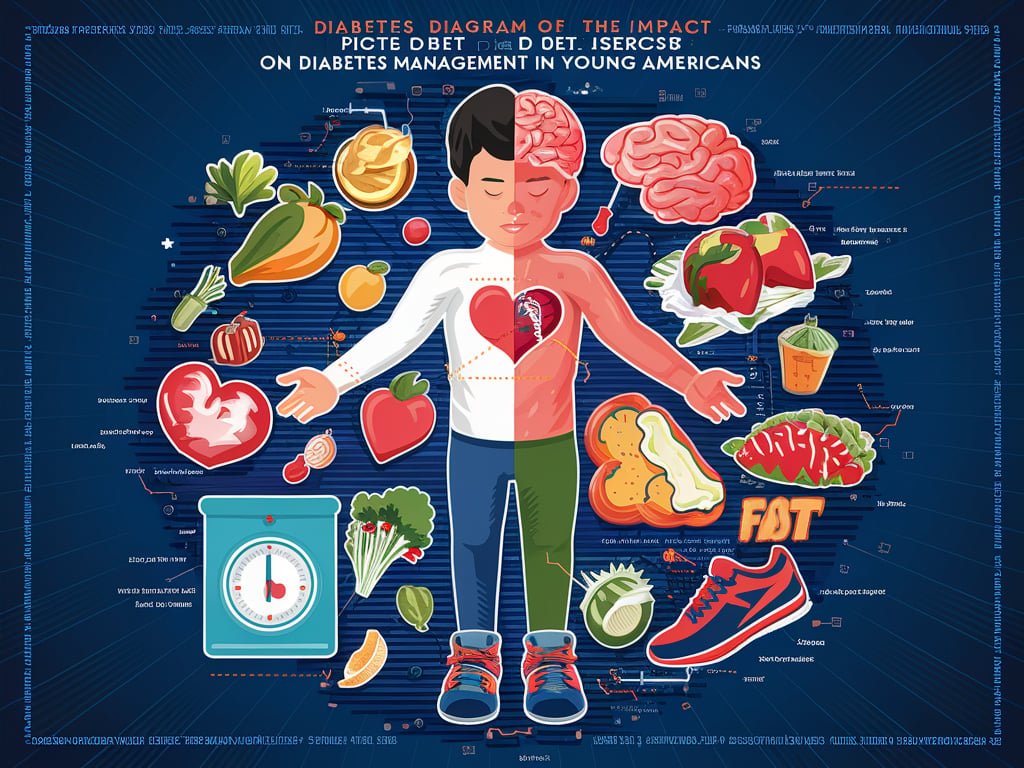The Growing Epidemic of Diabetes in America
Over the past few decades, diabetes has become increasingly prevalent in the United States, representing a significant public health challenge. According to the Centers for Disease Control and Prevention (CDC), the incidence of diagnosed diabetes has more than tripled since the early 1990s. By the end of 2021, over 34.2 million Americans – roughly 10.5% of the population – had diabetes, with Type 2 diabetes accounting for nearly 90-95% of these cases. Additionally, an increasing number of children and adolescents are being diagnosed with Type 1 and Type 2 diabetes, signaling a worrying trend that stretches across multiple age groups.

The rising epidemic of diabetes also reveals stark demographic trends. Certain ethnic groups are disproportionately affected – African Americans, Hispanics, Native Americans, and Asian Americans exhibit higher rates of diabetes compared to non-Hispanic whites. For instance, data shows that 12.7% of Hispanic adults and 11.7% of non-Hispanic black adults have diabetes, compared to 7.5% of non-Hispanic white adults. Additionally, geographical disparities exist, with southern and Appalachian regions experiencing higher diabetes prevalence due to factors such as limited access to healthcare and socioeconomic challenges.
Several contributing factors have spurred this epidemic. Lifestyle changes, including reduced physical activity and dietary shifts towards high-calorie, processed foods, play a crucial role. The proliferation of sedentary jobs, increased screen time, and urban living – all correlating with less physically demanding daily routines – have exacerbated the issue. Urbanization has influenced dietary patterns as well, with fast food and sugary beverages becoming staples in many American diets. Moreover, the decline in home-cooked meals, accompanied by the rise of convenience foods, has further entrenched unhealthy eating habits.
Understanding the multifaceted dynamics of this growing diabetes epidemic is essential for devising effective prevention and management strategies. Addressing these issues from multiple angles, including public health initiatives, community-based interventions, and individual lifestyle changes, can help mitigate the mounting impact of diabetes in the United States and forge a path towards better health outcomes for all Americans.
Key Factors Contributing to Higher Diabetes Rates Among Americans
The rising incidence of diabetes in the United States can largely be attributed to a combination of lifestyle choices, dietary habits, and broader socioeconomic factors. One of the most significant contributors is the increasingly sedentary lifestyle adopted by many Americans. With the prevalence of desk jobs, prolonged screen time, and a general reduction in physical activity, many individuals are expending fewer calories, leading to weight gain and an increased risk of developing diabetes.

Furthermore, the American diet has seen a shift towards increased consumption of processed and high-sugar foods. Fast food, sugary snacks, and beverages tend to be cheaper and more readily available than healthier alternatives. This dietary shift has a profound impact on blood sugar levels and weight management, both of which are crucial factors in diabetes prevention and management.
Obesity, a major risk factor for diabetes, is also on the rise. As body mass index (BMI) increases, so does the likelihood of developing insulin resistance, leading to type 2 diabetes. The correlation between obesity and diabetes is well-documented, underscoring the need for effective weight management strategies.
Genetic predispositions also play a role in the higher rates of diabetes among Americans. Certain populations may have a hereditary susceptibility to the disease, necessitating even greater vigilance in lifestyle and dietary habits. However, genetics alone do not explain the rapid increase in diabetes cases.

Socioeconomic status further compounds the issue, as lower-income individuals may have limited access to healthcare resources and education about diabetes prevention. Nutritional education and preventive measures are not equally available to all socioeconomic groups, exacerbating the disparities in diabetes rates. Additionally, the cost of healthcare can prevent early diagnosis and effective management of the disease.
Cultural and societal norms significantly influence dietary and physical activity habits. In many communities, high-calorie, nutrient-poor foods are staples, and physical activity is not emphasized. Community norms and advertising also heavily promote unhealthy habits, creating an environment where making healthier choices is challenging.
Preventive Measures for Controlling Diabetes in Young People
Preventing diabetes from a young age is pivotal in mitigating the growing prevalence of this chronic disease. Education on healthy eating habits stands as a cornerstone in this effort. Young individuals should be actively taught the importance of balanced diets that prioritize whole grains, lean proteins, fruits, and vegetables while limiting the intake of refined sugars and processed foods. Introducing these healthy eating habits at a formative age helps establish long-term dietary patterns that reduce diabetes risk.
Equally important is the emphasis on regular physical activity. Engaging in daily exercise not only aids in maintaining a healthy weight but also improves insulin sensitivity and blood glucose levels. Schools and community programs play a critical role in encouraging physical activity by providing safe environments and promoting sports and recreational activities. Implementing structured physical education programs and after-school sports can help children develop a routine that includes regular movement and exercise.

Maintaining a healthy weight is another crucial aspect of diabetes prevention in young people. Overweight and obesity are significant risk factors for developing type 2 diabetes. Parents, caregivers, and educators should focus on promoting a balanced lifestyle that includes nutritious eating and regular physical activity. For lasting impact, it is essential to induce a positive relationship with food and exercise rather than emphasizing weight alone.
Schools and community programs bear a significant responsibility in fostering environments that support healthy lifestyle choices. Schools can incorporate comprehensive health education curricula that teach children about nutrition, physical activity, and the importance of maintaining a healthy lifestyle. Additionally, community programs can offer resources and support for families, including cooking classes, educational workshops, and access to recreational facilities.

Practical advice for parents, caregivers, and educators involves modeling healthy behaviors and creating a supportive atmosphere for children. Providing nutritious meals, encouraging outdoor play, and leading by example with an active lifestyle are effective strategies. Engaging children in meal planning and preparation also instills practical knowledge about nutrition and healthy eating habits.
Long-Term Strategies and Policy Recommendations
Addressing the diabetes epidemic in the United States necessitates a comprehensive approach that encompasses both individual and systemic strategies. Paramount among these is the role of government initiatives in promoting public health. Effective food labeling is a critical first step; clear, understandable labels empower consumers to make healthier choices by being aware of sugar content and nutritional value. Simultaneously, legislative measures should be enacted to restrict the advertising of unhealthy foods, particularly those targeting children, as early exposure to unhealthy eating habits can lead to long-term consequences.
Equally important is the need for increased funding dedicated to diabetes research and prevention programs. Robust investment in scientific research can lead to breakthroughs in understanding and managing diabetes, while prevention programs can educate the public on healthy lifestyle choices, thus reducing the incidence of the disease. Public health campaigns that focus on improving diet and promoting regular physical activity are vital in preventing diabetes from a young age.

Healthcare reforms must also be considered to enhance access to preventive care and education. Comprehensive healthcare coverage that includes routine screenings, nutritional counseling, and diabetes education can significantly impact diabetes management. By making these services accessible and affordable, individuals at risk can receive the necessary guidance to prevent or delay the onset of diabetes.
Examining international case studies reveals valuable insights into effective diabetes management programs. For instance, Finland’s National Diabetes Program (DEHKO) successfully reduced the incidence of Type 2 diabetes through community-based prevention initiatives and widespread public education. Similarly, Japan’s proactive health policies emphasize regular health check-ups and lifestyle guidance, leading to better diabetes management outcomes.
Implementing similar evidence-based strategies in the United States could significantly alleviate the burden of diabetes. By prioritizing public health initiatives, reforming healthcare to focus on preventive care, and learning from successful international examples, it is possible to make substantial progress in curbing the diabetes epidemic and fostering a healthier future for all Americans.





Came across an interesting site, Mpox-Disease.com, that’s loaded with the latest Mpox news. It’s not affiliated with me, but I thought it might be useful for anyone seeking up-to-date information.